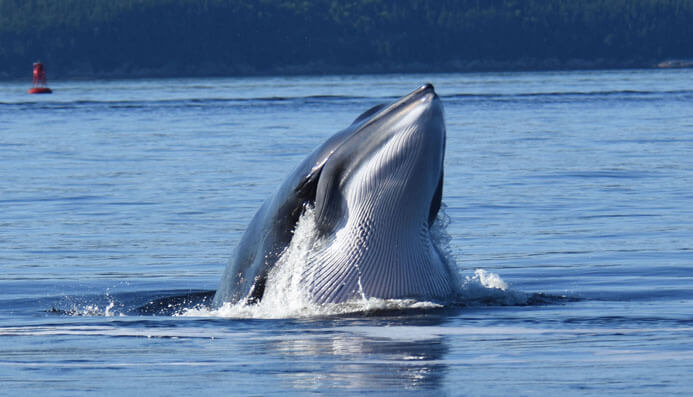They’re back! Whether it’s in Baie-Comeau on the North Shore, or in Chandler in the Gaspé Peninsula, the capelin are rolling on many of the region’s beaches. With emotion, a fisherman tells us how, as a kid, as soon as he would see the capelin arrive, he would take off his pants, tie a knot at the end of each leg, and fill them with the small slender fish, just to be the first person to bring his catch back to the village.
Off Pointe-au-Père, in the Lower St. Lawrence region, capelin remain offshore. “You can see hundreds of gulls of various species fluttering over the water and catching capelin on the surface, but always a few metres from the beach. It’s a feast, but still a little far from shore for us to enjoy,” says one observer. Off L’Anse-à-Brillant in Gaspé Bay, northern gannets are plunging into the water by the hundreds to enjoy the myriad fish. Capelin is considered to be a forage species, meaning it forms the basis of the diets for dozens of species, both above and below the water surface.
For a little more than two weeks in Baie-Comeau, two to three minke whales and a handful of porpoises have been seen every day. From time to time a large whale approaches the shore. Herds of harbour seals are also being observed. And of course there are the gannets, sometimes in groups of 50 or so, sometimes in pairs.
On the other side of the river, two vacationers travelling on Route 132 to Forillon Park are excited: a minke whale shows its back long enough to take two breaths. Later, they will be treated to another minke whale between Percé Rock and Bonaventure Island.
Off the coast of Gaspé, our collaborator René Roy spots four fin whales during a trip out to sea, including a mother-calf pair. He details this encounter in his most recent Field Notes.
On the ferry between Baie-Sainte-Catherine and Tadoussac, an observer spots belugas off Pointe Noire. In the Tadoussac area, six minke whales are also seen showing surface feeding behaviour. The minke whale often frequents tide rips, taking advantage of the fish trapped between the cold and warm water masses. It pursues its prey and traps them at the surface. At these moments, one can see the gaping throat turn pink, water splashing into the air due to fin slapping, or the whale’s entire body emerge from the water in an awesome breach.





